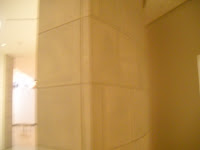The first video that I watched was the lowdown on lowbrow. I learned that the term was once used to describe art that was used with pornography but is now associated with art that nobody knows how to categorize. The term lowbrow was invented by a man named Richard Williams. The art that is included generally includes pictures of women and hot rods. Lowbrow is also used in rock posters often in the 60s with a mixture of psychedelic art. This period would rise after WWII. This was because people began to fear the unknown. I enjoyed this film and it did help me to open my eyes on what to do with art that goes against the grain but it did not help me with my project because I have such a specific topic. This video was very interesting to learn about the artwork that you may not normally think of, such as artwork on posters.
The second video that I had watched was the Tate approach. The Tate gallery was so popular that it had received a million visitors in a few month period. There is controversy about this museum because it lacks important parts of chronology. It focuses on British art and lacks western influences as well as female artists. One of the aspects of the video was useful in creating the project in that it shows peoples responses to artworks that are placed in a room together that are not from the same period or same medium. There was one room that contained traditional art and modern art and it supposedly desgined that way to make you think of the parallels between the artwork. I think that this showed me that viewers can be confused or get frustrated or offended if it is done this way. This video was more of an art gallery tour and I prefer more historical videos like the Indian one.
The next video on the Native Americans was my favorite. It was about the laws that were made to prevent archeologist from keeping remains of Native Americans as well as important artifacts in rituals. This movement started in Iowa and would spread across the country. I was not surprised to hear that the collection of skulls was collected to prove that the caucasion race was superior. I was however shocked that during that time that they believed that Native Americans were above African Americans. Native Americans were forced to live on reservations while African Americans could live within the society inventiually. I just thought that the scientist would have them the lowest ranking. I do not believe in a superior race, I was just shocked that how he justified it. I also liked the tribal affiliations and how the Native Americans refuse to believe science. Migration patterns were in the beginning of being discovered with the uses of genes in bones in Native American but then was made illegal. This did not really help with the project I thought, at least directly but I feel that it helps to explain to us as to why there are such limited artworks out there now that pertain to Native Americans. It also shows us was to why pieces like pottery which are considered art are not in museums as much because if it was used in ceremonies, Native Americans can have it back.
The last video I watched was the George Eastman House. I was not aware that such an important part of history as well as art was so close to Buffalo. I think that this video has made an impact on me as the viewer and I would like to visit it. This pointed out to me that there is more to art then the usual and that film should be considered. I did learn in the book about film but I guess until this video I did not think to choose this as a topic for my project. One quote that I enjoyed form this video being a history buff is that by displaying and keeping certain videos it shows people in the future was a culture what we value and then maybe they can understand us. The collection contains a huge variety of films from the century including silent films, operas and even King Kong films. This house was all made possible by George Eastman the father of popular photography. He invented motion picture films as well as the first affordable personnel camera. I really enjoyed this film. It showed me the importance of preserving and restoring art.










